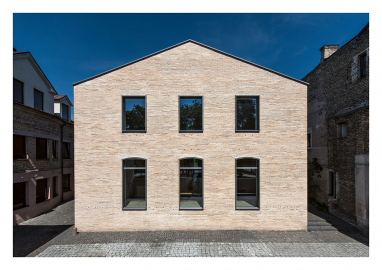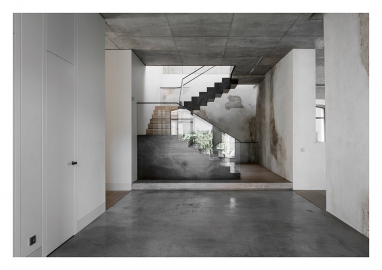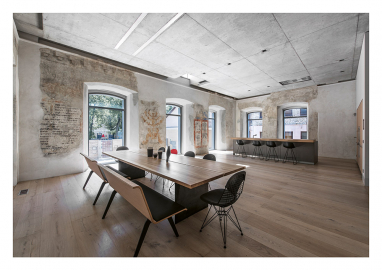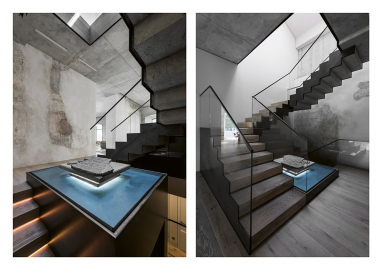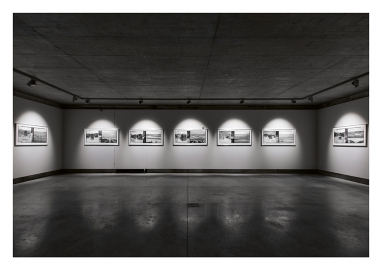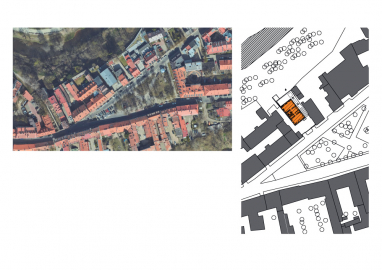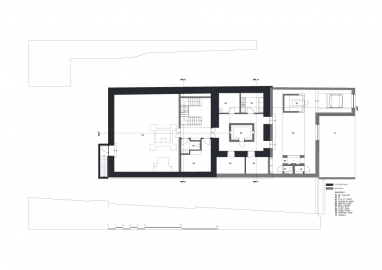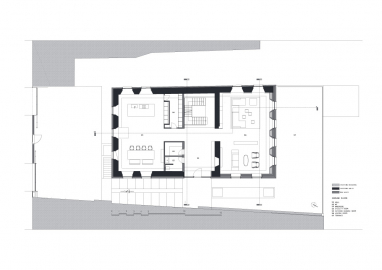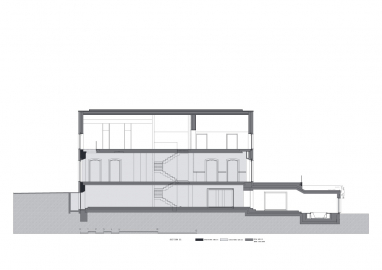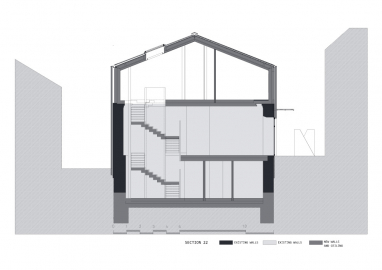Private House in the Bohemian Context
Reconstruction and partial restoration of interior spacesof a private residence with the art gallery space
The historic scale of the building was restored with a close dialogue with the surroundings. New constructions and other architectural details were created according to the old part of the house. It was very important to maintain the simple, elementary forms in both the plan and the interior spaces.
The old building was planned and designed according to the new lifestyle of the family, not losing the old spirit of the house. All spaces of the apartment have restored parts of old wall paintings, also old brick and stone walls from the previous synagogue.
The building contains three floors. In the basement, there are 3 main parts: Art gallery, Wine cellar and SPA area (sauna and small pool).
The entrance to the house leads to the hall and the stairs with the water pool, which are the central figure of the apartment connecting all three floors. Water pool serves as a natural air humidification system for the whole apartment.
The ground floor gathers dining room joined with the kitchen, spacious living room, entrance hall with the stairs, also the outside terrace with the marvellous top-hill view of Vilnius old town.
The first floor fits 5 bedrooms, comfortably planed for a big family living.
The short history of the building. In the middle of the 19th century, it was a place, where one of the most disciplined Jewish religious movements was born and developed.
This synagogue was not the first one to stand in this exact place – another Jewish prayer house stood here, but was destroyed by the flood of Vilnele river. This new mural one-floor synagogue has been built in 1841, but after fifty years the building was reconstructed regarding the needs of growing local Jewish community.
During the Nazi occupation in 1941-1944 the synagogue in Uzupis was ravaged, and after that came Soviet occupation during which this desolated prayer house was remodelled into living apartments. When Lithuania regained independence, it took almost 20 years, that someone would notice this Jewish heritage object and do something about it.
Developing the project the architect A.Trimonis aimed to restore the historic scale of the building as the dialogue with the surroundings. It was very important to maintain the simple, elementary forms in both the plan and the interior spaces.
For building reconstruction were used simple, authentic materials which are typical for this area, like clay bricks and tin roof, stone paving in the yard.
All building bricks were made in Lithuania by hands and according to architect assigned dimensions. The bricks colour was adjusted with a mixture of soot and water.
Another idea was to give the constructions of the building not only a function. The building constructions’ elements are left open in the whole building and become the most important form and material creating a mood of the interior.

